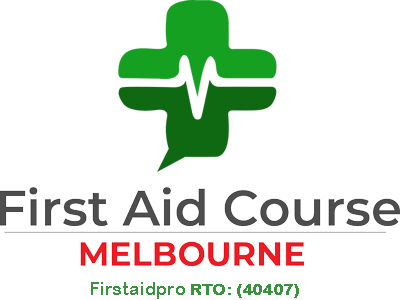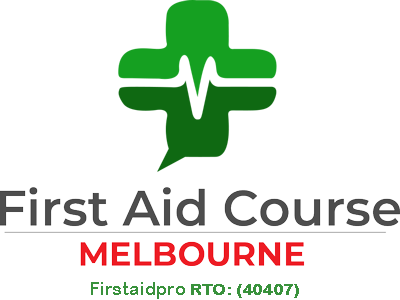Witnessing someone having a seizure can be a frightening and intimidating experience. However, basic first aid knowledge can enable you to remain calm and provide appropriate treatment to a person having seizures.
What are Seizures?
Our brain processes about 70,000 thoughts every day, and we need 100 billion electrical impulses to generate and transmit to the brain for us to function well. When there is an electrical glitch in that system, a seizure happens.
Seizures occur when there is a random surge of electrical activity in the brain which temporarily disrupts our normal body function.
According to Elizabeth Gerard, MD, an epileptologist at Northwestern Medicine Comprehensive Epilepsy Center, “Seizures can be difficult to identify because they generally last just a few seconds to a few minutes.”
Despite the difficulty in diagnosing seizures, it is thought to affect about 3 in every people in Australia. Most of them will experience recurring seizures or have ‘active epilepsy.’
Types of Seizures
Seizures are classified according to the brain’s areas affected by the chaotic surge of electrical activity. There is an equivalent degree of danger for each seizure, and some are more dangerous than others.
There are 29 different types of seizures, and they fall into two basic categories— focal onset seizures and generalised seizures.
Focal onset seizures
Are also known as partial seizures; these occur when the surge of electrical activity is localised to only one brain area. It might start with the moving of the arms or twitching in the face area. A person with focal onset seizures is most often awake and aware of what is happening during an attack. However, they do not have the control to make it stop. When the seizure starts progressing, the person might seem to zone out or stare at nothing. Afterwards, they may or may not remember a single thing about the attack.
Generalised seizure
It occurs when the surge of electrical activity within the brain is widespread and reaches multiple areas at once. In this type of seizure, the person is rarely aware of what is happening. The most well-known type that falls in this group is the tonic-clonic seizure, or formerly known as ‘grand mal seizure.’
As implied by the name, this combines the characteristics of two distinct stages. Tonic means stiffening, while clonic means rhythmical jerking. These types of seizures are frightening to watch and considered life-threatening.
A sequence of events characterises the tonic-clonic seizure:
- The tonic phase comes first, where the person’s body stiffens and may lose consciousness. All body muscles may clench, and they become rigid as a board. This phase may last for a few seconds.
- The clonic phase comes next, a series of jerking movements that convulses a person’s body. The arms and legs may begin to jerk in strong, symmetrical, rhythmic movements. This includes bending and relaxing at the elbows, hips, and knees. Eventually, the jerking stops after 1 to 3 minutes.
- Afterwards, the person may feel sleepy, confused, irritable, or depressed.
The uncontrolled movements during a tonic-clonic seizure can be dangerous as the person is not aware of their surroundings. This highly increases their chance of acquiring an injury and may result in a trip to a local emergency room.
Warning Signs of Seizures
The signs and symptoms a person displays may vary depending on the type of seizure they are experiencing.
Partial Seizure Symptoms
Since partial seizure affects only one area of the brain, a person may remain alert or aware of their actions or surroundings. The symptoms may include:
- Altered senses (in smell, taste, hearing, speech, and vision)
- Having intense emotions such as anger, anxiety, fear, or panic.
- The feeling of ‘déjà vu’
- Memory lapses or having flashbacks
- Repetitive movements such as lip-smacking, scratching, blinking, and/or facial twitching
- Jerking, twitching, or stiffness of limbs
- Nausea, sweating, or feeling flushed
Tonic-Clonic Seizure Symptoms
If you have a tonic-clonic seizure, some or all of the following symptoms may occur:
- Muscle stiffness
- Trashing and jerking of the limbs
- Facial twitching
- Cyanosis or a blue tinge around the mouth
- Biting of the tongue or cheek
- Incontinence of bladder or bowels
- Loss of consciousness
- For the postictal period – confusion, drowsiness, memory loss, and headache.
Seizure First Aid
First aid for seizure is a matter of taking precautions. While first aid can be used for both types, you will be most likely to need it for a generalised tonic-clonic seizure.
First aid for partial seizures usually focuses on observing the person and ensuring their safety until the seizure resolves. Keep the person away from dangers, including traffic and dangerous objects nearby, without restraining them.
In the event of a tonic-clonic seizure, do the following first aid steps:
- Stay calm and reassure
Do not panic. Instead, remain calm and stay with the person. Reassure the people nearby if necessary.
- Remove dangerous objects from the immediate area.
Clear hard or sharp objects away from the person without moving or restraining them.
- Protect the head and clear the airway
Put a soft pillow, a folded jumper, or coat under the person’s head for protection. Loosen any tight clothing from the neck area.
- Turn the person onto their side.
Put them in a recovery position (on their side). This will help open up their airway and allow anything in the mouth to drain out. Do not put anything in their mouth. Contrary to a popular myth, you cannot swallow your tongue during a seizure. Putting an object in their mouth can only cause damage to the teeth.
Stay with the person until they have regained consciousness and any symptoms of seizure have been resolved.
Dial Triple Zero (000) and call for an ambulance if:
- The seizure activity lasts for more than 5 minutes
- Repeated seizures occur
- An injury has been sustained
- The person never had any seizure activity before
- The person is having trouble breathing or waking after the seizure.
- The person is taking maintenance medication such as diabetes and other heart diseases.
- The person is pregnant.
Tonic-clonic seizures can lead to injury and, in some rare cases – death. Getting first aid treatment is essential.








